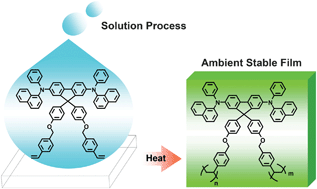A thermally cured 9,9-diarylfluorene-based triaryldiamine polymer displaying high hole mobility and remarkable ambient stability
Abstract
We have synthesized and characterized a novel thermally polymerizable triaryldiamine monomer (VB-FNPD) possessing a


 Please wait while we load your content...
Please wait while we load your content...